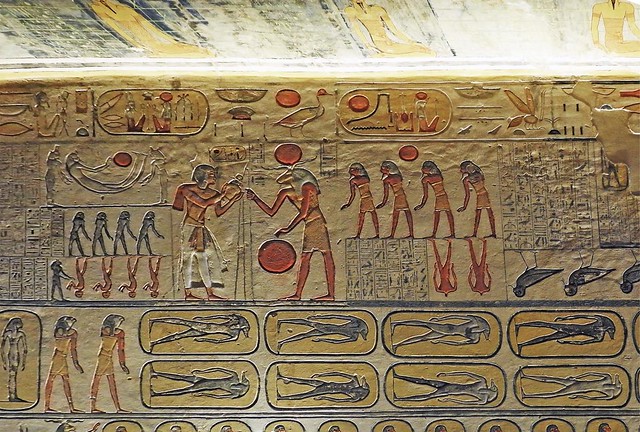

If you are a serious student of the pharaohs, there is a multi-day ticket available for everything in the Luxor area for 100 U.S. dollars. Wikipedia has a nice overview of each of the tombs such as Setnakht's KV 14 which we are headed to in the pictures below. Just click on the desired tomb number at the bottom of their page. This includes a nice 3-D depiction of the tomb.


The color inside the Valley tombs is surprisingly well preserved. These are much better examples of color than you will find at most sites making the Valley a "must see" location on any visit to Egypt.




Finally reaching the king's sarcophagus at the bottom of the tunnel is almost a disappointment.

Wikipedia lists the overall length of the tunnel at 112 meters, and there are more than enough pictures and hieroglyphics to keep you occupied for fifteen minutes or an hour depending on your interest.


Outside the tomb, workers are still excavating. It's all hand work, one basket at a time. New discoveries are expected to be minor, but there is still one tomb, Ramses VIII, that has not been uncovered according to this National Geographic article.


KV 11, the final resting place of Ramses III, is another tomb with a very long passageway. This one seemed to be particularly popular with people taking photos on their cellphones. Lots of selfies were being taken near the best wall paintings.
















































